Bench Press Workout – Top Exercises and Benefits Explained

The bench press is a classic strength training exercise where you lie on your back and push a weighted barbell up and down. Bench press workout primarily focuses on your chest, shoulders, and triceps.
Bench press is great for building upper body strength and muscle. It’s popular among bodybuilders, powerlifters, and anyone wanting to improve their chest and upper body strength. However, beginners should start with light weights and proper form.
You can include the bench press in your workout routine anytime you hit the gym. It’s most effective when part of a balanced strength training regimen, usually on chest day alongside other chest exercises.
Beginner Bench Press Workout Exercises
Barbell Bench Press
Equipment: Barbell, bench
Muscles Targeted: Chest (pectoralis major), shoulders (anterior deltoids), triceps
How to Do It:
- Lie flat on a bench with your feet flat on the floor and your back arched naturally. Your eyes should be aligned with the barbell.
- Grip the barbell slightly wider than shoulder-width apart. Lift it from the rack and hold it above your chest with arms fully extended.
- Lower the barbell to your chest in a controlled manner, then push it back up until your arms are fully extended. This completes one repetition.
Dumbbell Bench Press
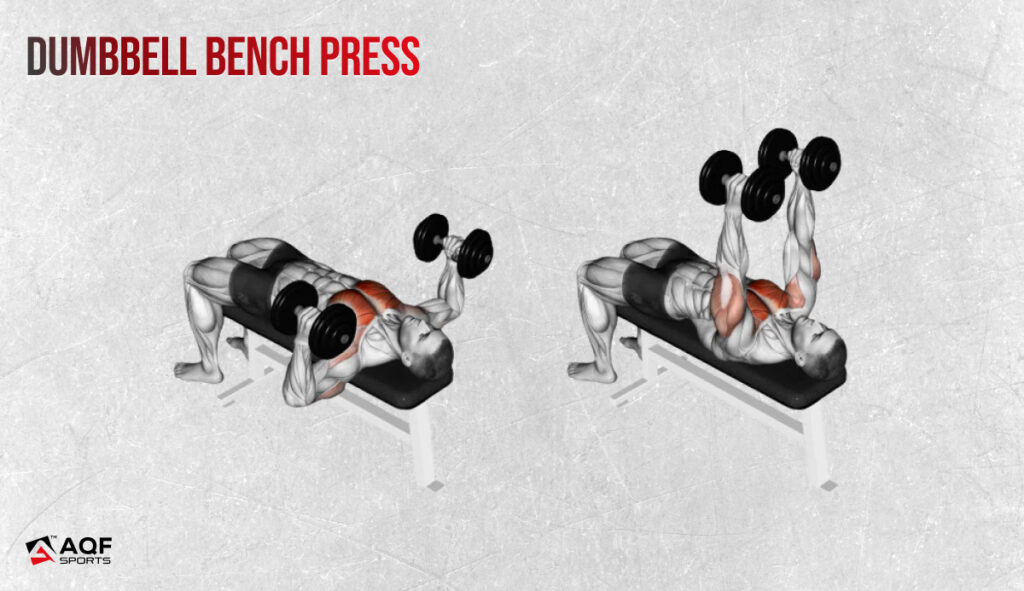
Equipment: Dumbbells, bench, Wear wrist wraps for joint stability during presses.
Muscles Targeted: Chest (pectoralis major), shoulders (anterior deltoids), triceps
How to Do It:
- Lie flat on a bench with a dumbbell in each hand, held directly above your chest.
- Keep your feet flat on the floor, and your back arched naturally.
- Lower the dumbbells to your chest, then press them back up to the starting position. This is one repetition.
Incline Bench Press
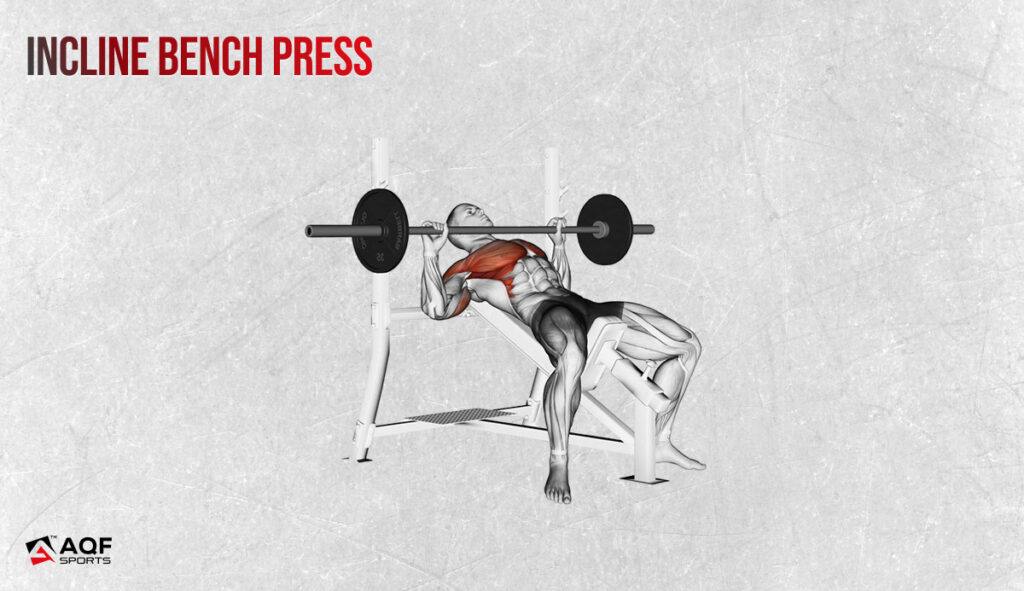
Equipment: Barbell or dumbbells, incline bench.
Muscles Targeted: Upper chest (clavicular head of pectoralis major), shoulders (anterior deltoids), triceps
How to Do It:
- Set the bench at an incline (usually around 30-45 degrees).
- Lie back on the bench, grip the barbell or dumbbells, and extend your arms.
- Lower the weight to your chest, then press it back up to the starting position.
Decline Bench Press
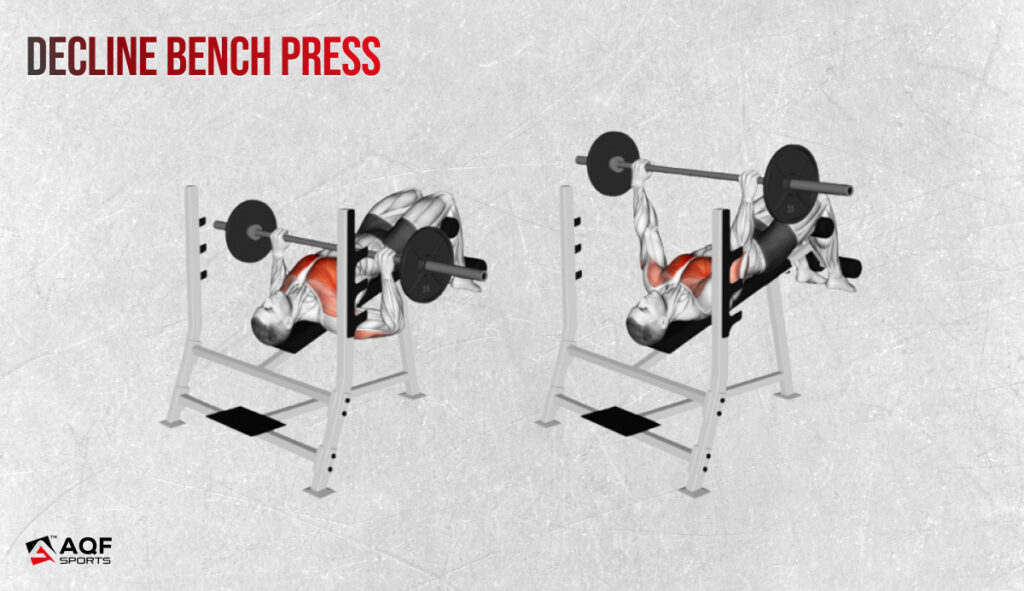
Equipment: Barbell or dumbbells, decline bench. Wear wrist wraps for joint stability during presses.
Muscles Targeted: Lower chest (sternal head of pectoralis major), shoulders (anterior deltoids), triceps
How to Do It:
- Position yourself on the decline bench with your head lower than your feet.
- Grip the barbell or dumbbells, keeping your arms extended.
- Lower the weight to your chest, then push it back up to the starting position.
Close-Grip Bench Press
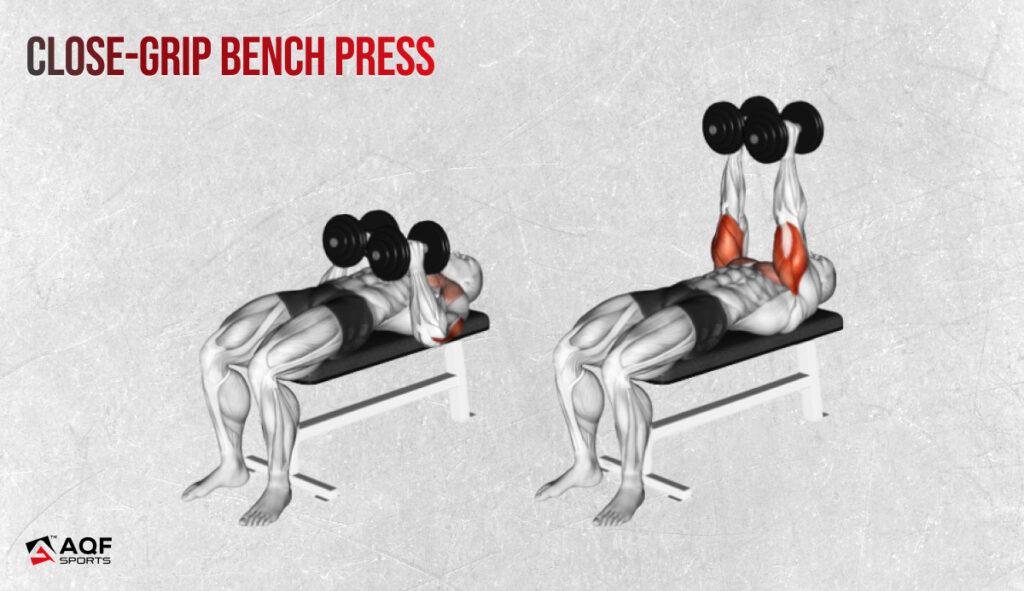
Equipment: Barbell, bench
Muscles Targeted: Triceps, chest (inner pectoral muscles), shoulders (anterior deltoids)
How to Do It:
- Lie flat on a bench with your feet flat on the floor and your back arched.
- Grip the barbell with your hands closer together, around shoulder-width apart.
- Lower the barbell to your chest, then push it back up to the starting position.
Advanced Bench Press Workout Exercises
Pause Rep Bench Press
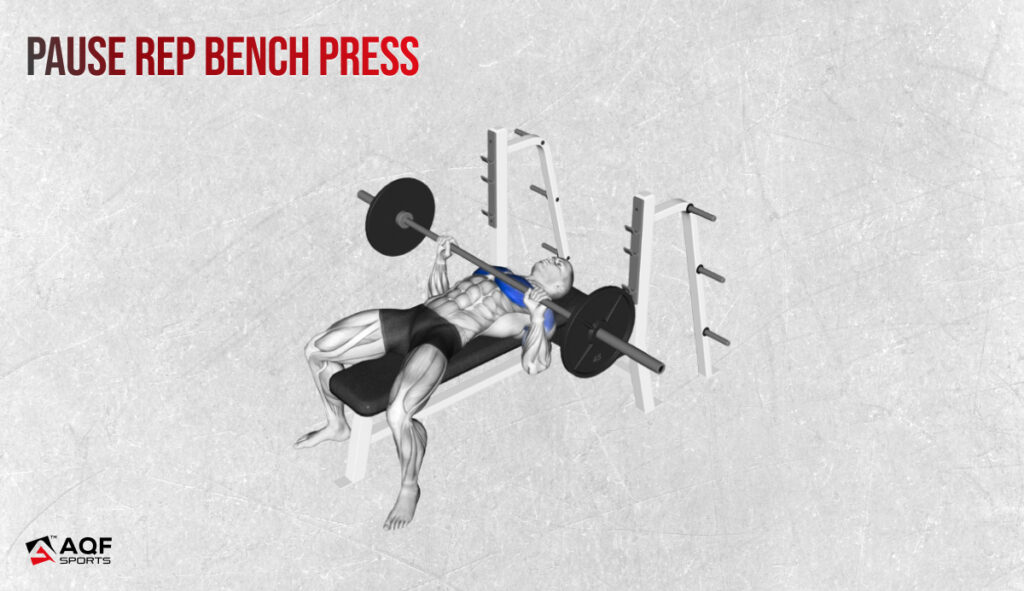
Equipment: Barbell, bench
Muscles Targeted: Chest (pectoralis major), shoulders (anterior deltoids), triceps
How to Do It:
- Set up as you would for a standard barbell bench press.
- As you lower the bar to your chest, pause for a brief moment (1-2 seconds) just above your chest.
- Then, explode back up to the starting position. The pause adds an element of difficulty by eliminating the stretch reflex.
Incline Dumbbell Flyes
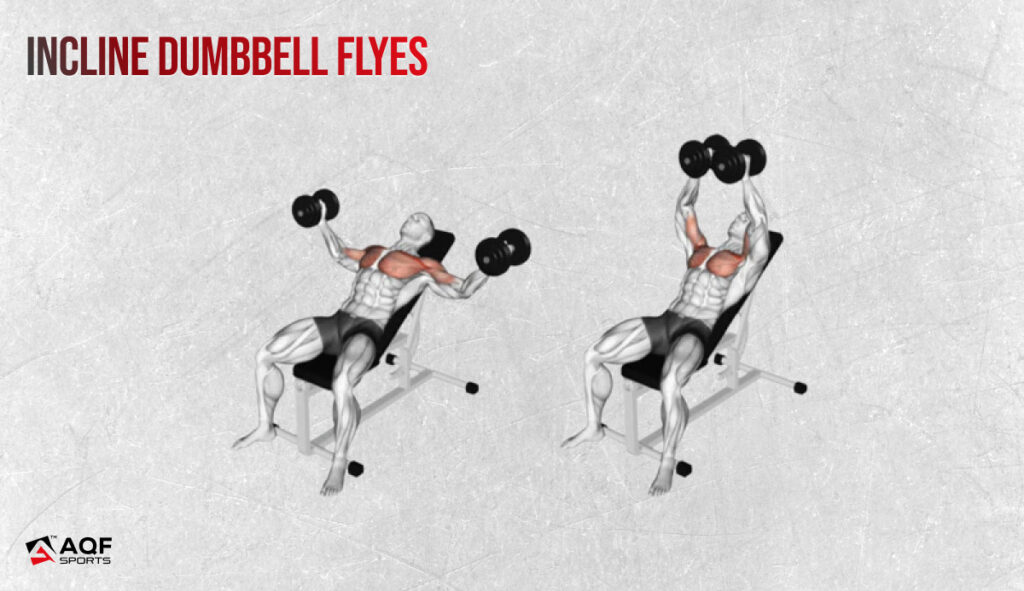
Equipment: Dumbbells, incline bench
Muscles Targeted: Upper chest (clavicular head of pectoralis major), shoulders (anterior deltoids)
How to Do It:
- Lie on an incline bench with a dumbbell in each hand, arms extended above your chest.
- Lower the dumbbells out to the sides in a wide arc, feeling the stretch in your chest.
- Bring the dumbbells back up to the starting position, squeezing your chest at the top.
Board Press

Equipment: Barbell, bench, boards (or similar objects)
Muscles Targeted: Chest (pectoralis major), shoulders (anterior deltoids), triceps
How to Do It:
- Place boards (or objects like 2x4s) on your chest to limit the range of motion.
- Set up as you would for a regular bench press.
- Lower the bar until it touches the boards, then press it back up.
Spoto Press
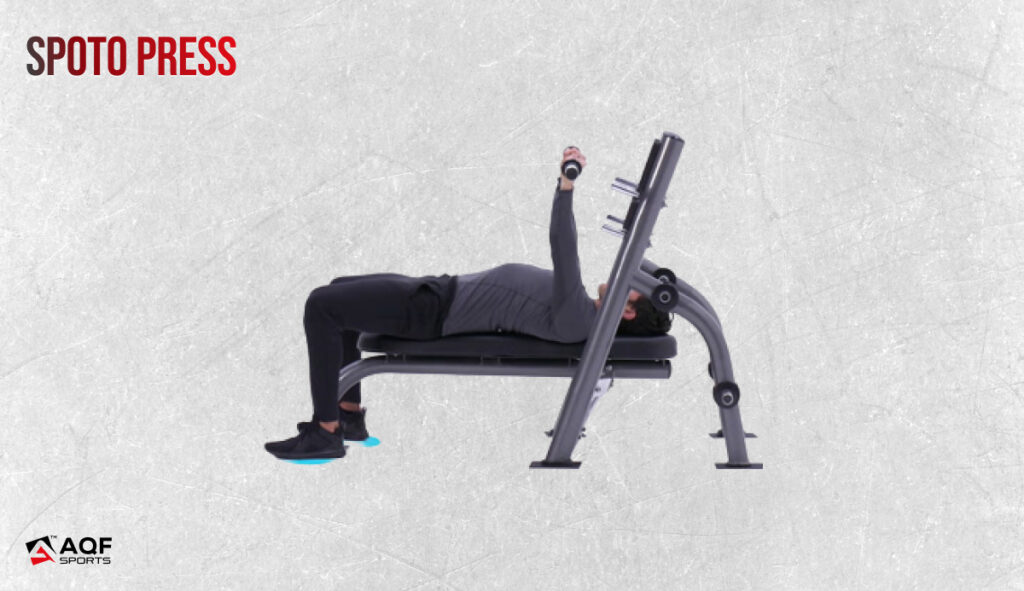
Equipment: Barbell, bench
Muscles Targeted: Chest (pectoralis major), shoulders (anterior deltoids), triceps
How to Do It:
- Begin like a standard bench press, but pause the barbell just above your chest, without resting it on your body.
- Hold this position briefly (1-2 seconds) to eliminate the stretch reflex.
- Press the bar back to the starting position.
Exercise Ball Dumbbell Press
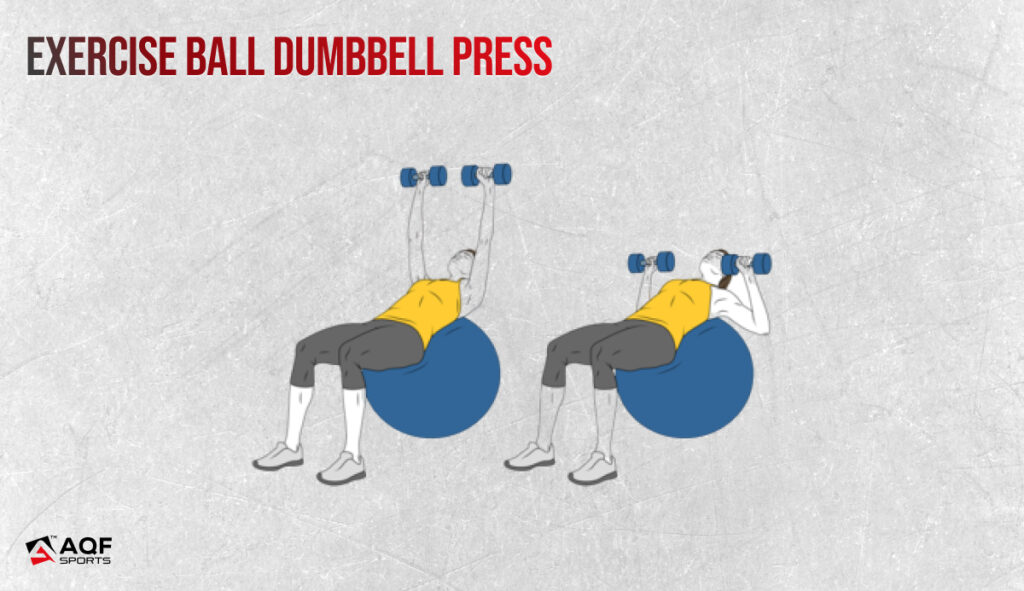
Equipment: Exercise ball, dumbbells
Muscles Targeted: Chest (pectoralis major), shoulders (anterior deltoids), triceps, core (to stabilize on the ball)
How to Do It:
- Sit on a Swiss ball with a dumbbell in each hand.
- Roll forward until your upper back and shoulders are supported by the ball, hips parallel to the floor.
- Perform a dumbbell press while maintaining balance on the exercise ball, engaging your core muscles.
How to get in Proper Form for Bench Press Workout?
1. Set Up the Bench:
- Position the bench flat or at a slight incline, depending on your preference.
- Ensure it’s on a stable surface with adequate support.
2. Body Placement:
- Lie down on the bench with your head, upper back, and buttocks making contact with the bench.
- Feet should be flat on the floor, shoulder-width apart.
- Keep your natural arch in the lower back. Avoid excessive arching, which can lead to injury.
Suggested Read: 7 Common Sports Injuries You Need to Know About!
3. Hand Placement:
- Grip the barbell slightly wider than shoulder-width apart for a standard grip.
- Make sure your wrists are straight, not bent backward.
4. Unrack the Bar:
- Before lifting, ensure the bar is positioned directly above your chest.
- Lift the bar off the rack, or have a spotter assist you.
5. Lower the Bar:
- Inhale and lower the bar to your chest in a controlled manner. Keep your elbows at a 45-degree angle to your torso.
- The bar should touch your chest or come very close to it without bouncing. Maintain a slight pause at the bottom.
6. Press the Bar:
- Exhale and push the bar back to the starting position, extending your arms fully.
- Focus on driving through your heels and using your chest and triceps to lift the weight.
7. Spotter (if available):
- It’s safer to have a spotter to assist in case you struggle with the weight. They can help with racking and unracking the bar.
8. Maintain Control:
- Throughout the lift, maintain control of the bar. Avoid jerking or fast movements, which can lead to injury.
9. Proper Breathing:
- Inhale as you lower the bar to your chest.
- Exhale as you press the bar back up.
10. Rack the Bar:
- Once you’ve completed your set, return the bar to the rack, ensuring it’s secure.
Three Types of Grips in Bench Press
Standard Grip:
This is the most common grip, where your hands are placed slightly wider than shoulder-width apart on the barbell. It’s a balanced grip that engages the chest, shoulders, and triceps.

Close Grip:
In this variation, your hands are positioned closer together on the barbell, typically at around shoulder-width or slightly narrower. A close grip emphasizes the triceps and can reduce the stress on the chest.
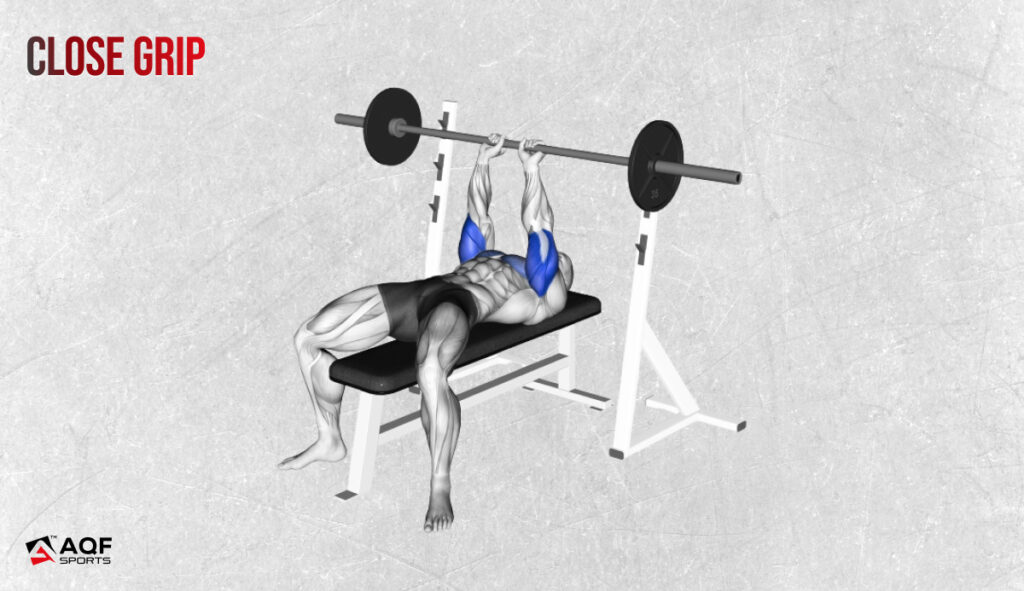
Wide Grip:
A wide grip involves placing your hands wider apart on the barbell, often beyond shoulder-width. This grip primarily targets the chest and shoulders, with less involvement of the triceps.
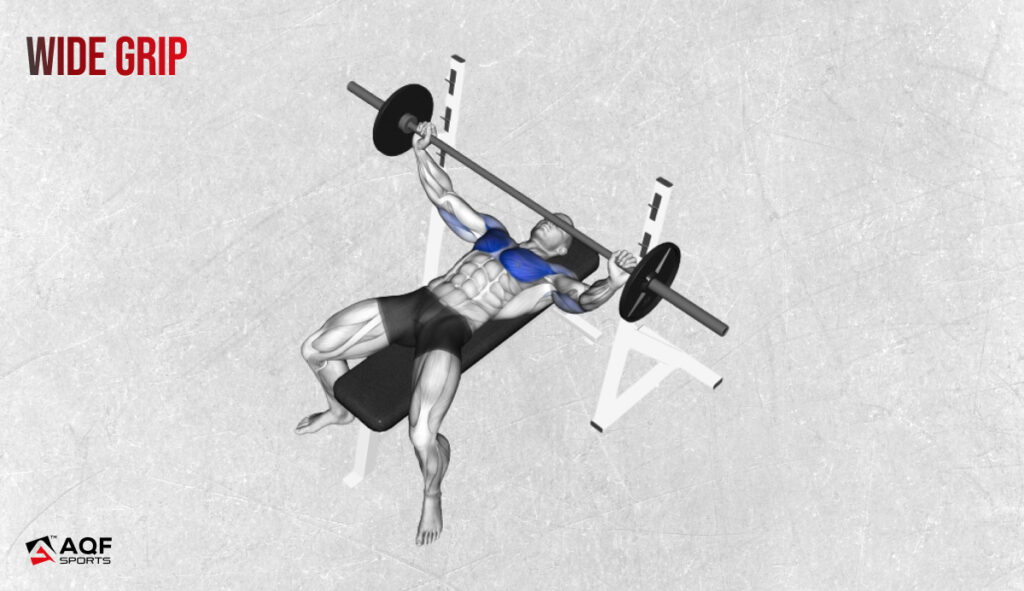
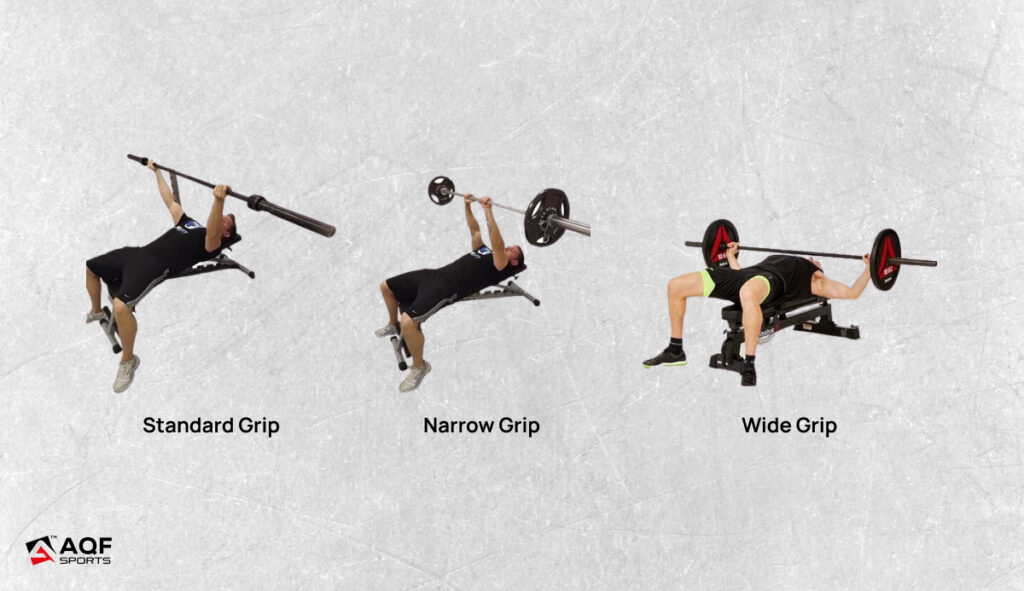
Bench Press Target Muscles
The bench press primarily works your chest muscles (pectoral major), along with your anterior deltoids (shoulders) and triceps, making it a key exercise for upper body strength.
When you perform a bench press, your pectoralis major contracts concentrically and shortens to move your arms forward and push the weight.
Simultaneously, your anterior deltoids, triceps, serratus anterior, rhomboids, and trapezius muscles contract isometrically to stabilize and control the movement.
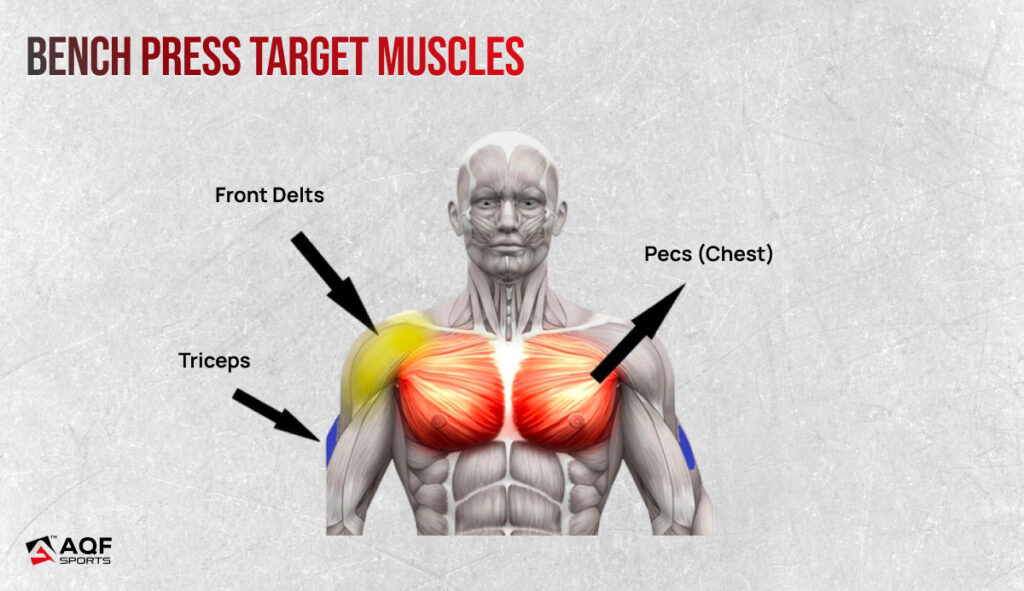
Shoulder, which is a ball and socket joint, is the primary joint involved in bench press. The humerus (upper arm bone) undergoes flexion and extension, while the shoulder blade (scapula) maintains stability and proper positioning.
The bench press involves a lever system. Your barbell is the resistance, your elbow joint is the fulcrum, and your muscles apply force to lift the weight. The length of your upper arm and forearm can affect the mechanical advantage or disadvantage during the lift.
Bench Press Energy Cycle
The bench press primarily relies on the phosphagen energy system, which provides short energy bursts for high-intensity, short-duration activities. The anaerobic glycolytic system also contributes as your muscles work hard and build up lactic acid.
During the bench press, your body recruits motor units, which are composed of motor neurons and the muscle fibers. Initially, smaller motor units are activated, followed by larger units as the lift gets more challenging.
For example, during a bench press, as you lower the barbell to your chest, your pectoralis major and anterior deltoids eccentrically contract to control the descent. They then concentrically contract to push the bar back up.
Bench Press Workout – Frequently Asked Questions
How much should I bench press a day?
The ideal bench press weight for your daily session depends on your personal strength and fitness goals. If you’re a beginner, start with a manageable weight that allows you to complete 3-5 sets of 6-12 repetitions with proper form. Gradually increase the weight as you build strength and confidence.
Is it good to bench press every day?
It’s not advisable to bench press every day. Proper rest and recovery are essential for muscle growth and injury prevention. Strength training programs generally recommend a minimum of 48 hours of recovery between bench press sessions to prevent overtraining, fatigue, and the risk of injury.
Does bench press hit lower chest?
The bench press predominantly targets the upper and middle chest, specifically the sternal and clavicular heads of the pectoralis major. While it does engage the lower chest to some degree, it may not provide focused lower chest development. To target the lower chest more effectively, consider including decline bench presses or chest flyes in your routine.
For example, if you want to work on your lower chest, incorporate decline bench presses into your workout. Aim for 3 sets of 8-10 repetitions with challenging weights to emphasize the lower chest.
Is bench press a whole body workout?
No, the bench press mainly targets the upper body. It doesn’t engage your legs, core, or back. For a full-body workout, incorporate exercises like squats, deadlifts, and rows.
The Bottomline
Bench press workout enhances upper body strength and muscle growth in the chest, shoulders, and triceps. It defines your muscles and improves functional strength, making daily activities easier. Try a range of bench press variations for a challenging and effective upper body workout. Consistency is key in gaining ideal upper body strength results.
Explore More Topics
- Should You Wear Wrist Straps for Deadlifting?
- Figure 8 Lifting Straps vs Normal Straps! Which Is Best For You?
- 15 Best Compound Lifts and Exercises to Gain Muscle Mass





